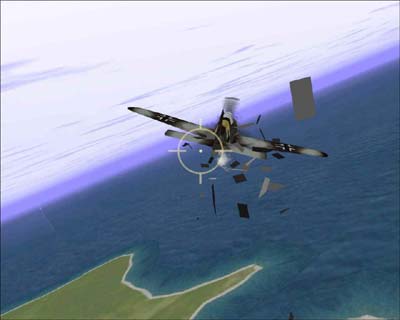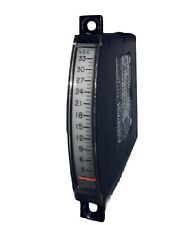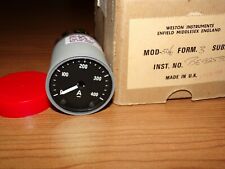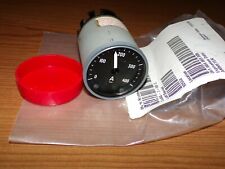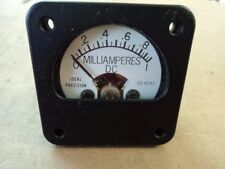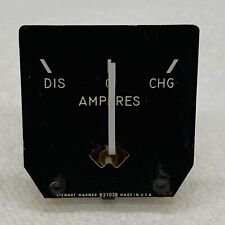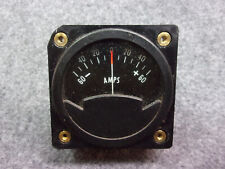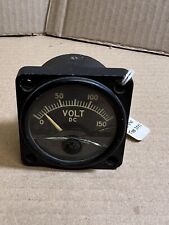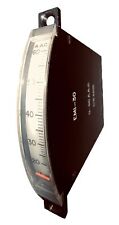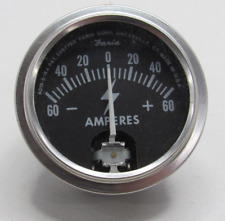by Andy Bush
In our ever-present search for realism in our sims, we continue to ask developers for more and more realistic flight models. They have done a good job in responding to these requests. One aspect of the flight model issue has been the introduction and refinement of flap and trim use. Today, we routinely use these features to bring out the most in realism in our sims.
That’s the good news. The bad news is that our sim documentation is pretty lacking in any significant information on how to use these features properly. A second potential problem lies with the programming of the sim itself. Flap or trim systems for our sims should replicate real life since the sim pilot will most likely attempt to use real life procedures and techniques to operate these systems.
To date, these two problems…lack of documentation and improperly coded flap or trim programs…have detracted from “realism” in our game play. Too often, players try to use flaps and trim in ways that are incorrect. The result is that flap and trim systems are coded so that the aircraft can be flown outside of its real world flight envelope.
My objective in this second of three articles on flight control systems is to give you some background info and suggested techniques that will permit you to operate the flap system correctly and effectively. To do that, I’ll start off with some academic info that explains what flaps are designed to do. Then, I’ll suggest some tips on how to use flaps in a typical sim.
Before we jump into the meat of the matter, let’s remember that these are articles on secondary flight controls…flaps are intended to supplement our primary flight controls (stick and rudder)…not replace them. To put it simply, we do not fly with flaps…we make flying easier and more effective by using them. Let’s not lose sight of that very basic fact as we get into the article!
But before we start, let me admit that I am no aero expert. The information in this article is simplified to help you enjoy these features in your favorite simulation…not to make you the next engineer hired by Boeing!
Section One – High Lift Devices: Flaps, Slats, and Slots
What is a flap?
A flap is part of a family known as “high lift devices”. These consist of flaps, slats, slots, and boundary layer control devices. All of these increase lift and decrease stall speed.

The airfoil is the general curved shape of the wing. Flaps operate up and down to change the shape of the airfoil and, in some cases, the shape of the wing itself.
 Most planes have flaps that may be lowered in several stages. As a rule the first one or twostages are used for takeoff and possibly combat maneuvering, and the latter stages of the flap range are normally used for landing.
Most planes have flaps that may be lowered in several stages. As a rule the first one or twostages are used for takeoff and possibly combat maneuvering, and the latter stages of the flap range are normally used for landing.
What does a flap do?
 Let’s go back to that picture of an airfoil and talk briefly about what an airfoil does. The purpose of an airfoil is to produce a difference in pressure between the air going over the top surface of the wing and the air that flows under the wing. This difference in pressures results in the formation of lift…which, of course, is what makes an airplane different from other means of transportation! Our purpose in this article is not to teach aerodynamics, so I’m going to simplify matters a bit!
Let’s go back to that picture of an airfoil and talk briefly about what an airfoil does. The purpose of an airfoil is to produce a difference in pressure between the air going over the top surface of the wing and the air that flows under the wing. This difference in pressures results in the formation of lift…which, of course, is what makes an airplane different from other means of transportation! Our purpose in this article is not to teach aerodynamics, so I’m going to simplify matters a bit!
We associate the difference in air pressure with the distance the airstream has to follow as it goes over the and under the wing. Generally, the greater the distance, the greater the difference in the two pressures. The resultant difference in pressures creates lift.
 A few words about lift are in order. Why? Because lift is what turns an airplane…and turning is what we do to perform a combat maneuver. Better control of lift means better turning, which in turn leads to better and more effective maneuvering which then results in you being the winner and not the loser!
A few words about lift are in order. Why? Because lift is what turns an airplane…and turning is what we do to perform a combat maneuver. Better control of lift means better turning, which in turn leads to better and more effective maneuvering which then results in you being the winner and not the loser!
To better understand what a flap does, let’s look at the relationship of an airplane’s angle of attack to the amount of lift being produced. We begin with the term “angle of attack”.
Let’s draw a line between the leading and trailing edges of an airfoil. Call this line the “chord line”. When an airplane flys through the air, the airstream meets the wing’s leading edge at some angle. The angle between the airstream (also known as the relative wind) and the chord line is the “angle of attack” (AOA). Note this well! The AOA is a function of the “chord line angle”, not the “fuselage angle”!

Now, a graph to show the effect of increasing AOA on the production of lift. Note the  airplane’spitchattitude as its AOA increases.The vertical axis is calibrated in units of “coefficient of lift” which is a fancy term that refers to the amount of lift being produced. What we see here is that the coefficient of lift (Cl…pronounced “see sub ell”) increases as AOA increases…up to a point where it stops increasing. As AOA increases, the airflow over the top of the wing becomes more and more curved. Eventually, the airflow cannot continue to follow the curvature of the wing, and the airflow breaks loose and separates from the wing.
airplane’spitchattitude as its AOA increases.The vertical axis is calibrated in units of “coefficient of lift” which is a fancy term that refers to the amount of lift being produced. What we see here is that the coefficient of lift (Cl…pronounced “see sub ell”) increases as AOA increases…up to a point where it stops increasing. As AOA increases, the airflow over the top of the wing becomes more and more curved. Eventually, the airflow cannot continue to follow the curvature of the wing, and the airflow breaks loose and separates from the wing.
This is the point at which the airplane stalls. An airplane stalls at a given AOA…not airspeed! Remember that…an airplane stalls as a function of AOA, not airspeed! Stall speed will change with weight but stall AOA remains the same for a given wing configuration!
That implies that changing a wing’s shape may change its stall characteristics, to include its stall AOA.
True fact! That’s what flaps are all about. Here is another graph that shows how flaps change the lift picture.

In this diagram, you can see that putting the flaps down creates an increase in Cl for a given AOA. Also note that the stall AOA is less than for the “clean” wing but has a greater Cl value. It is also important to see that this new stall AOA occurs at a lower speed.
At this point, here is what we know: flaps decrease the stall speed and stall AOA and increase lift. The next subject covers the types of flaps.


